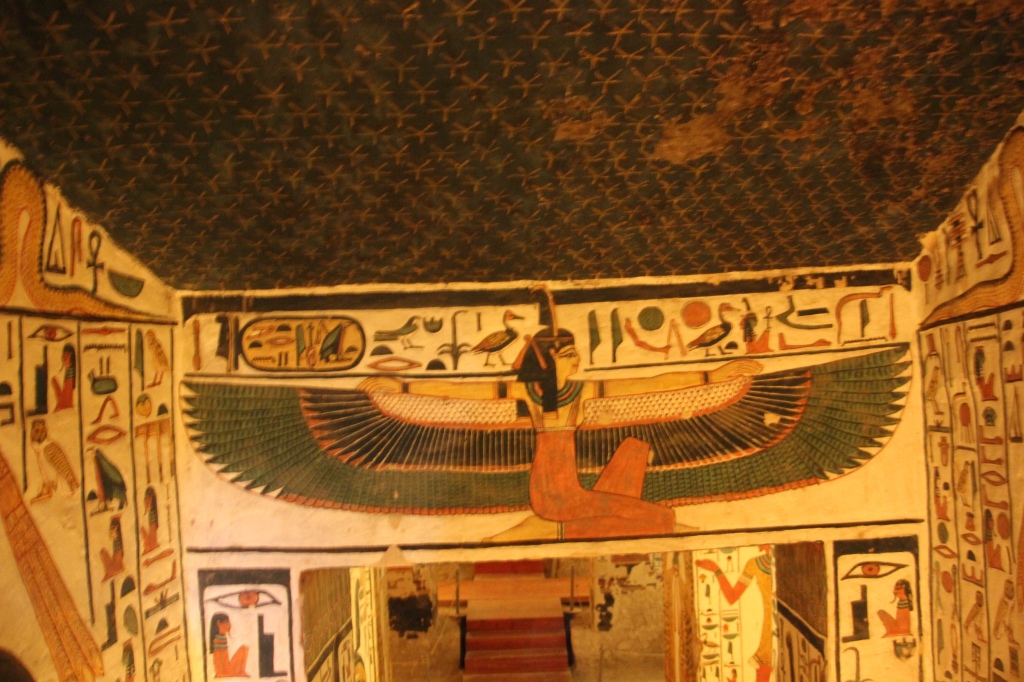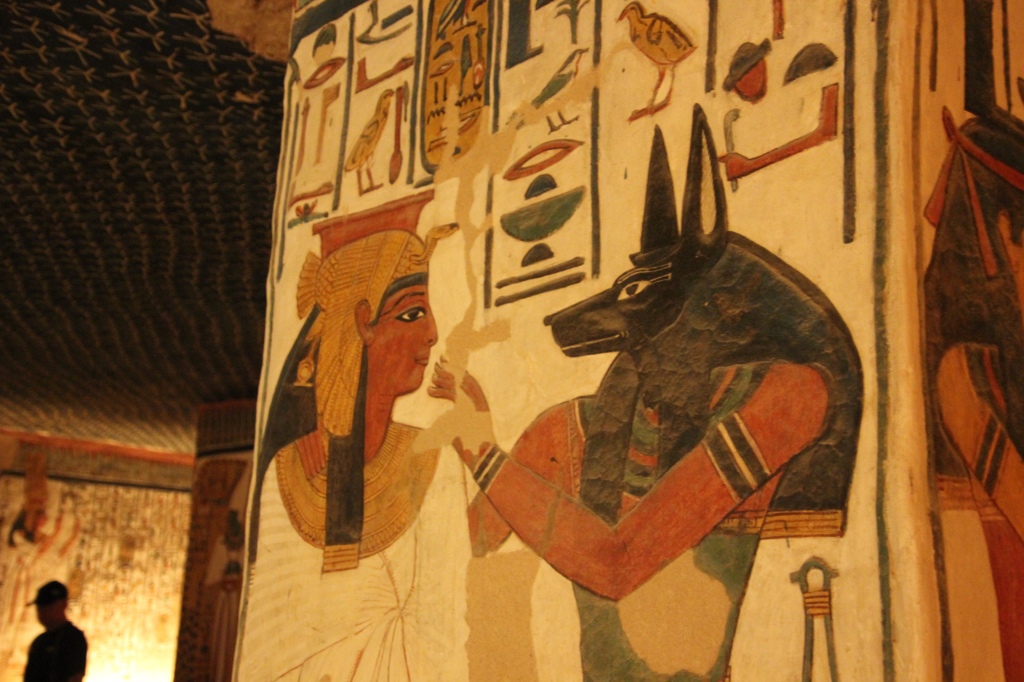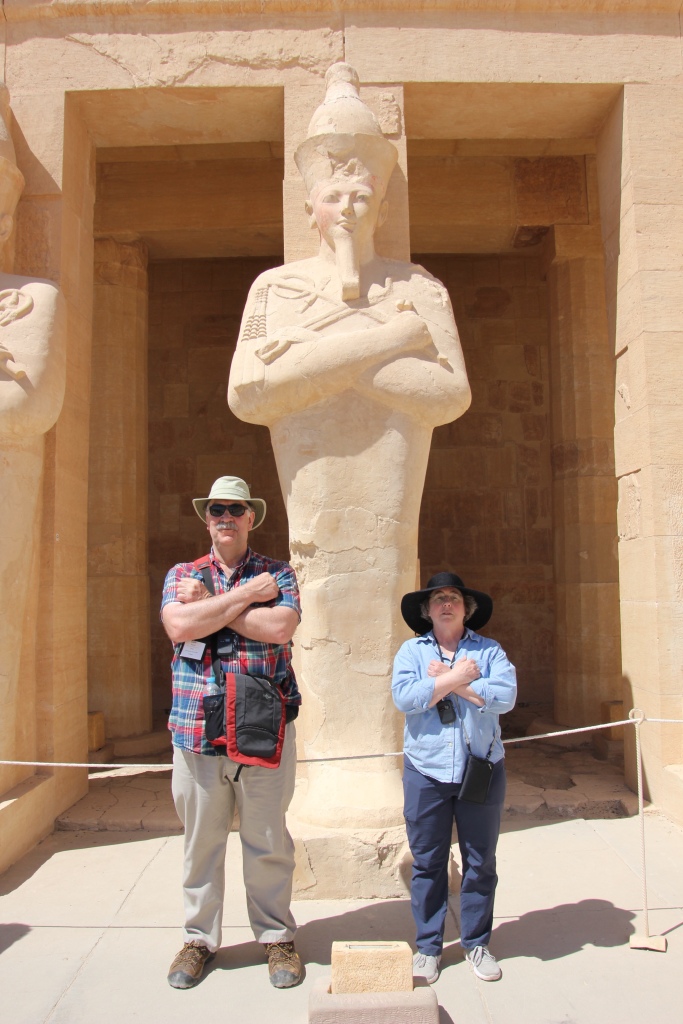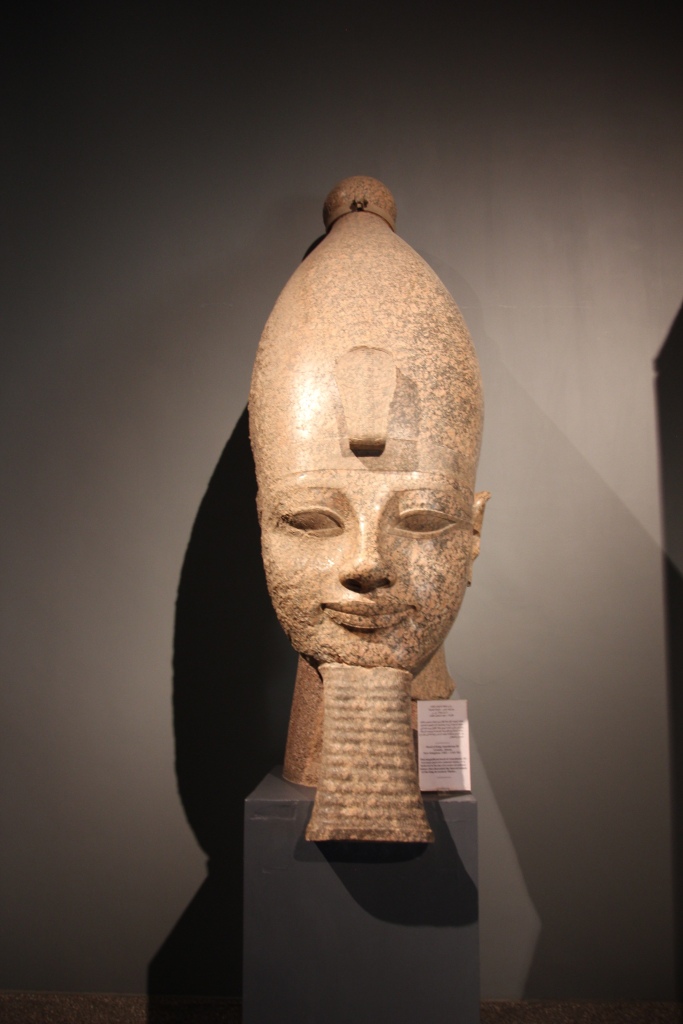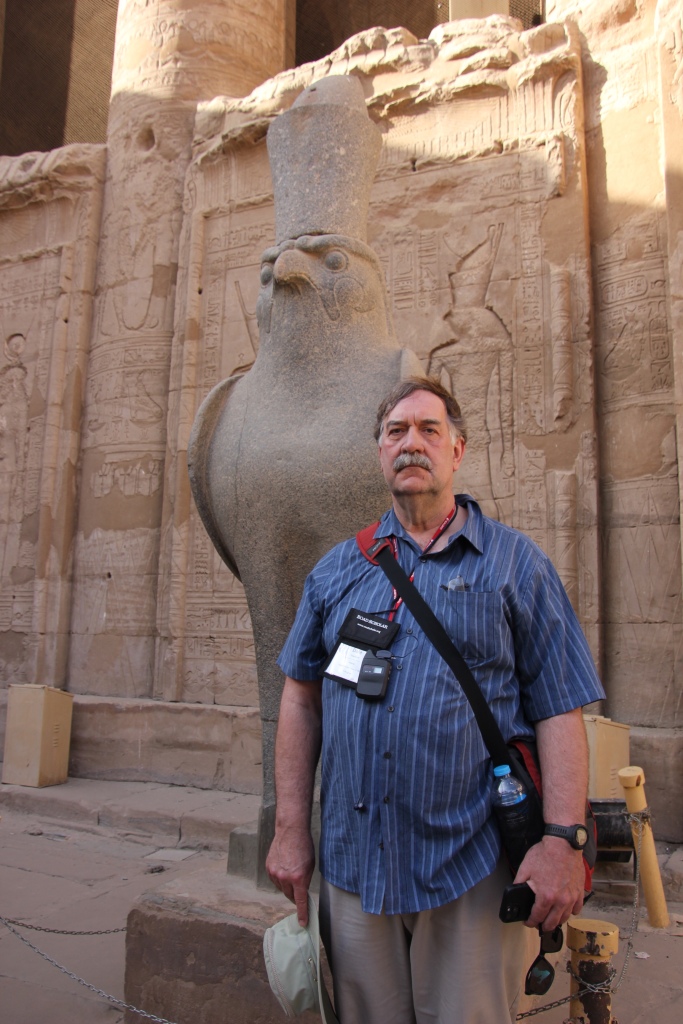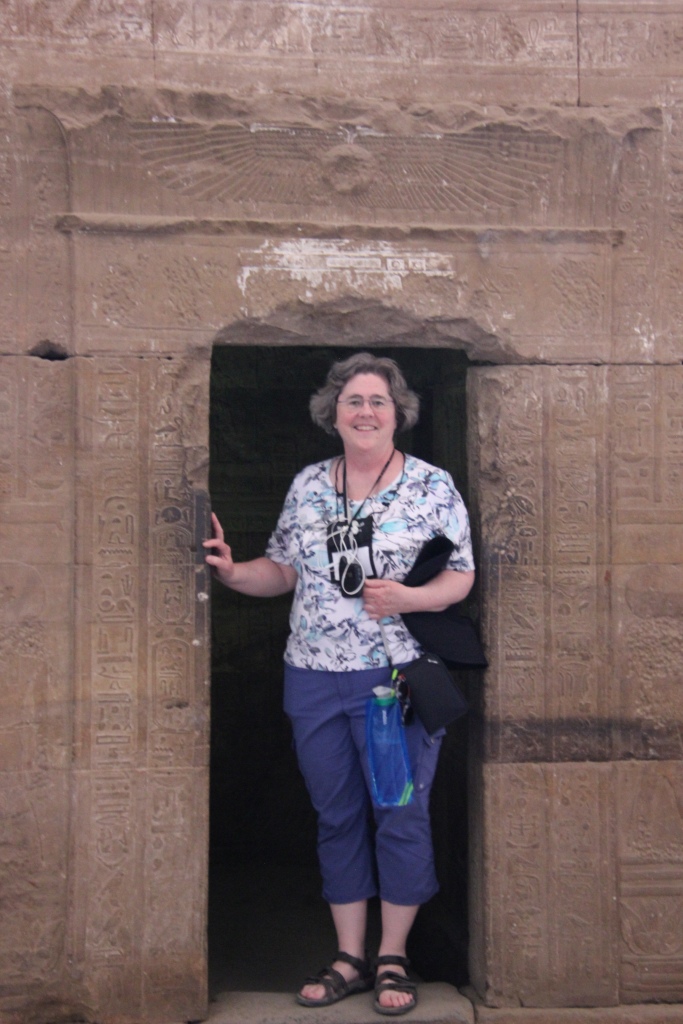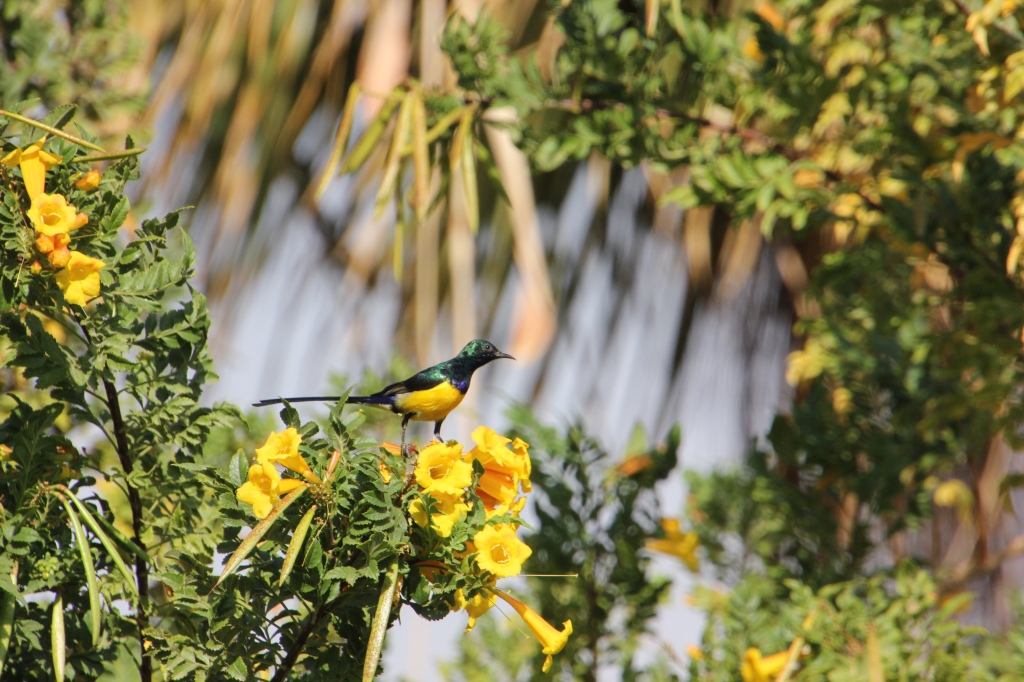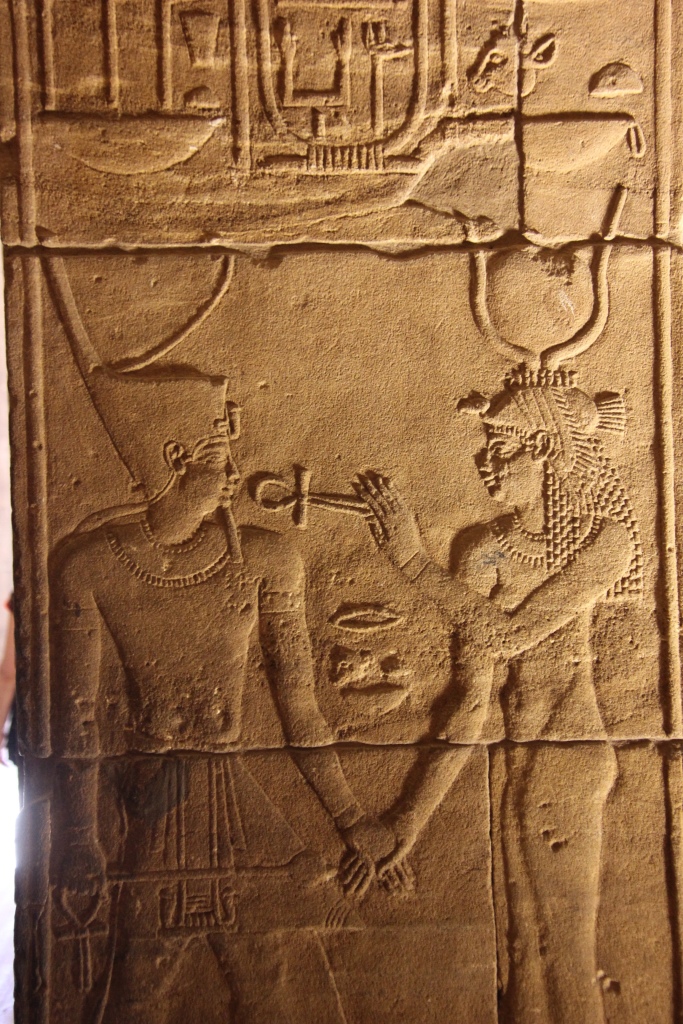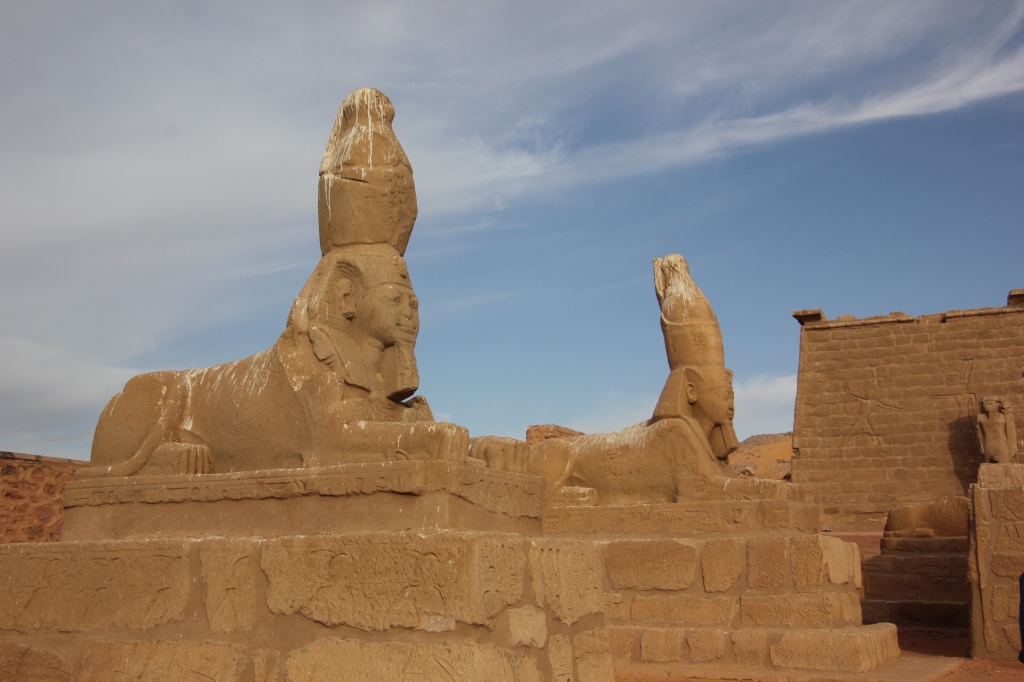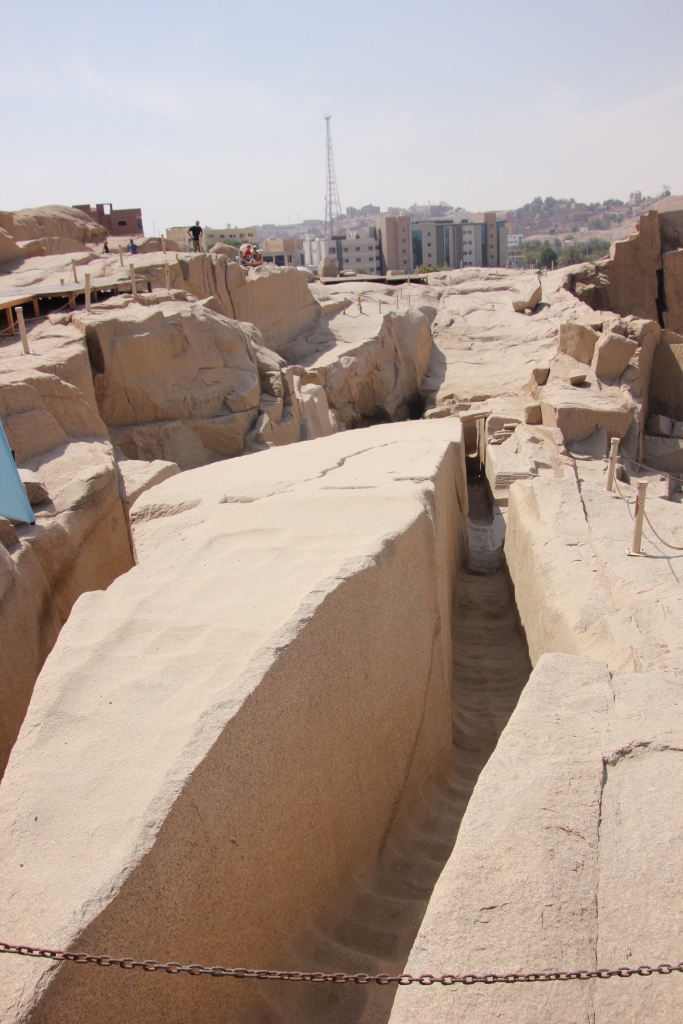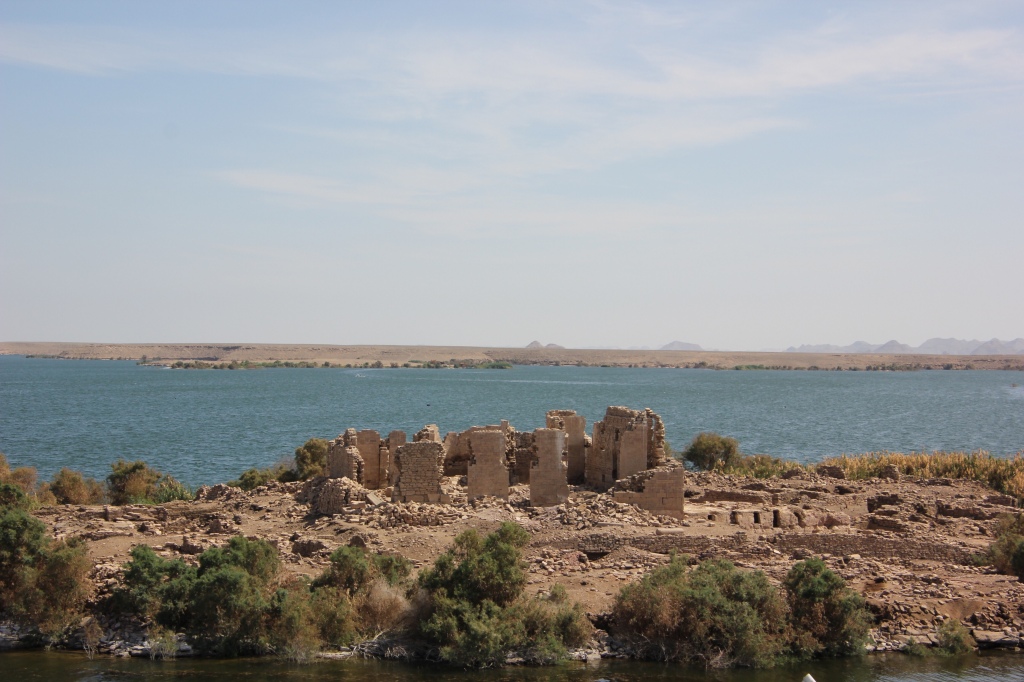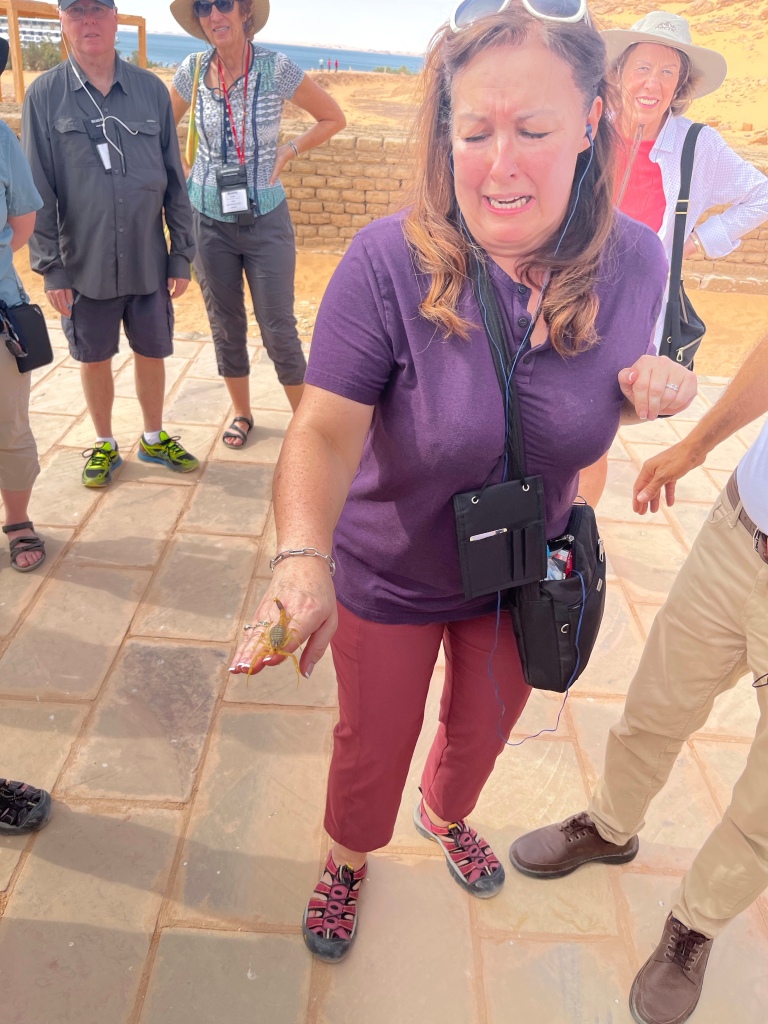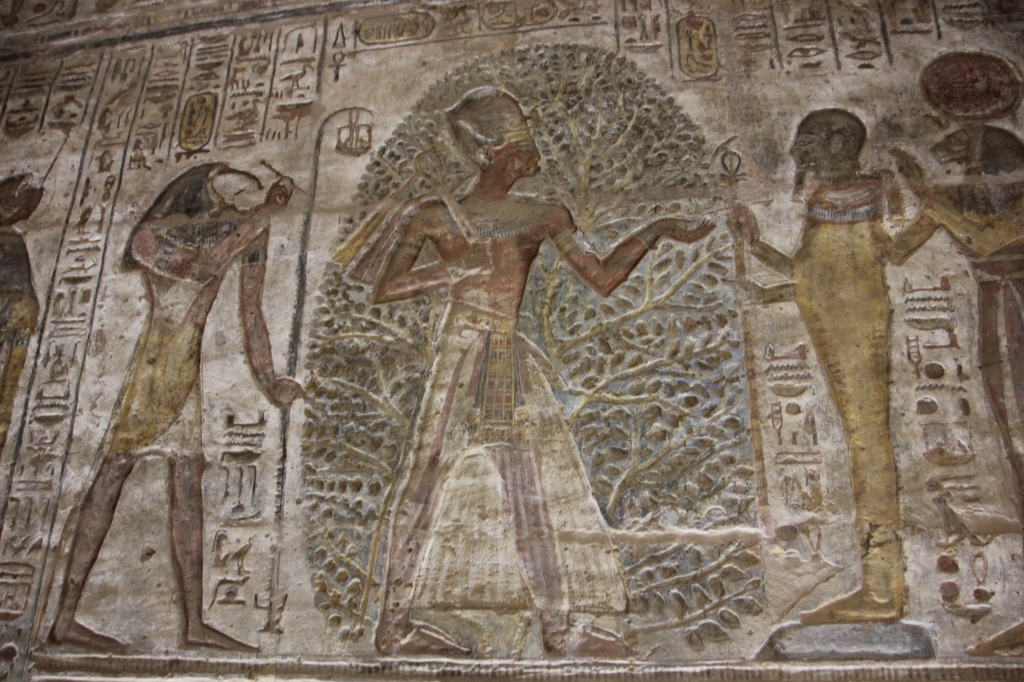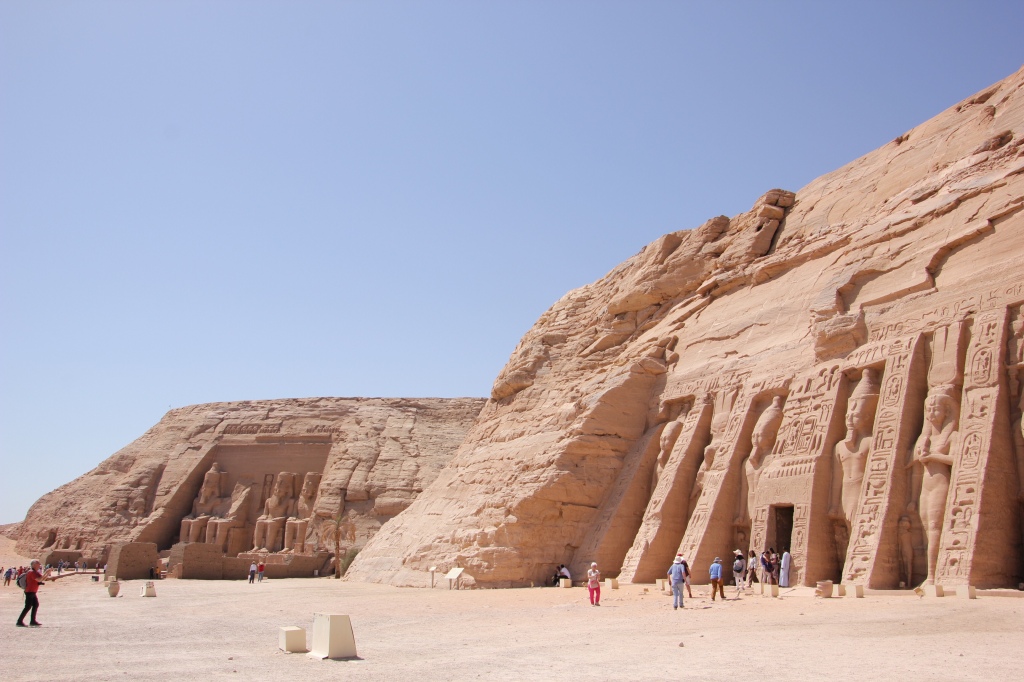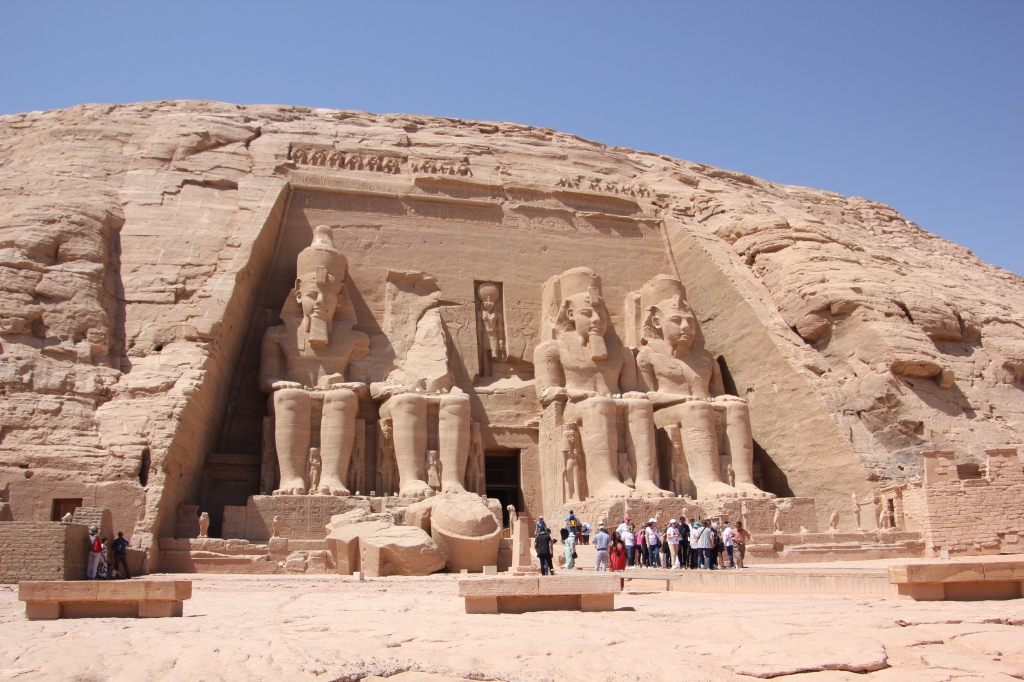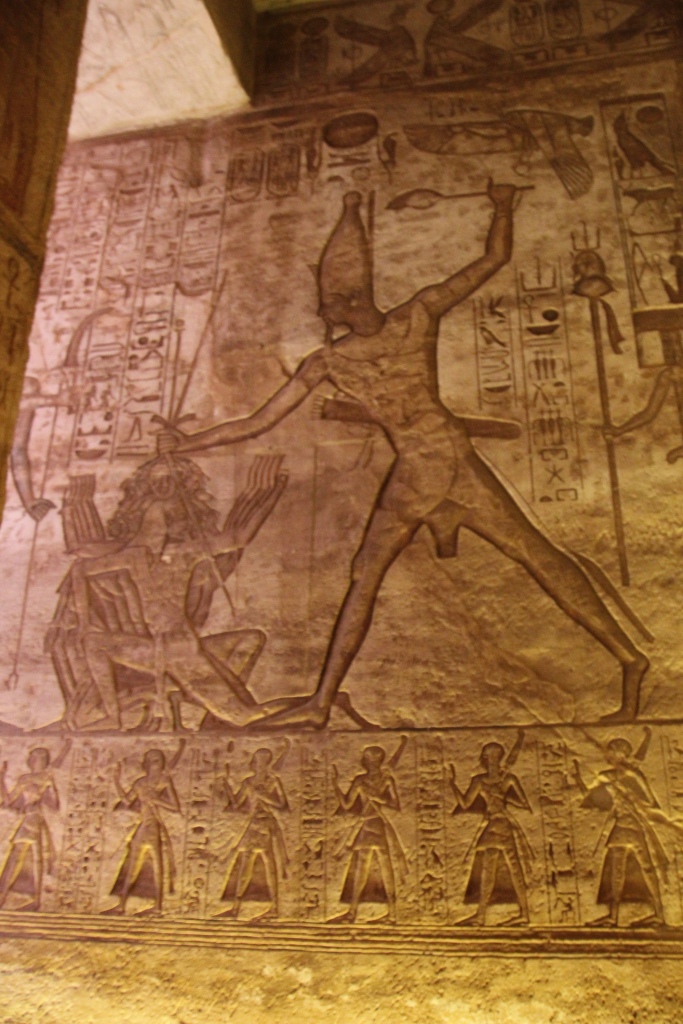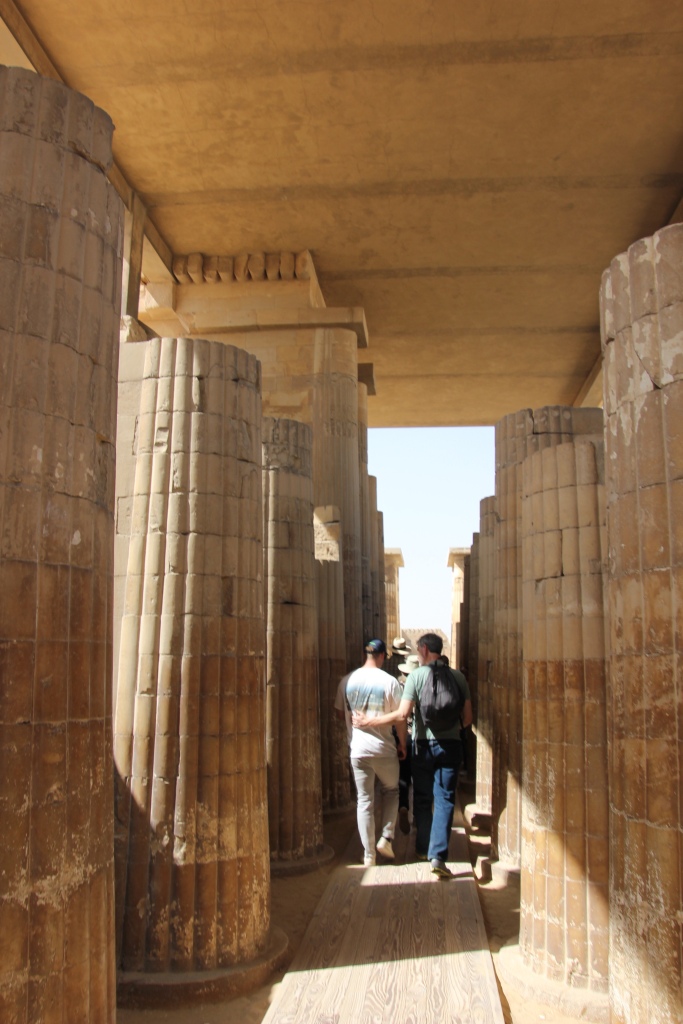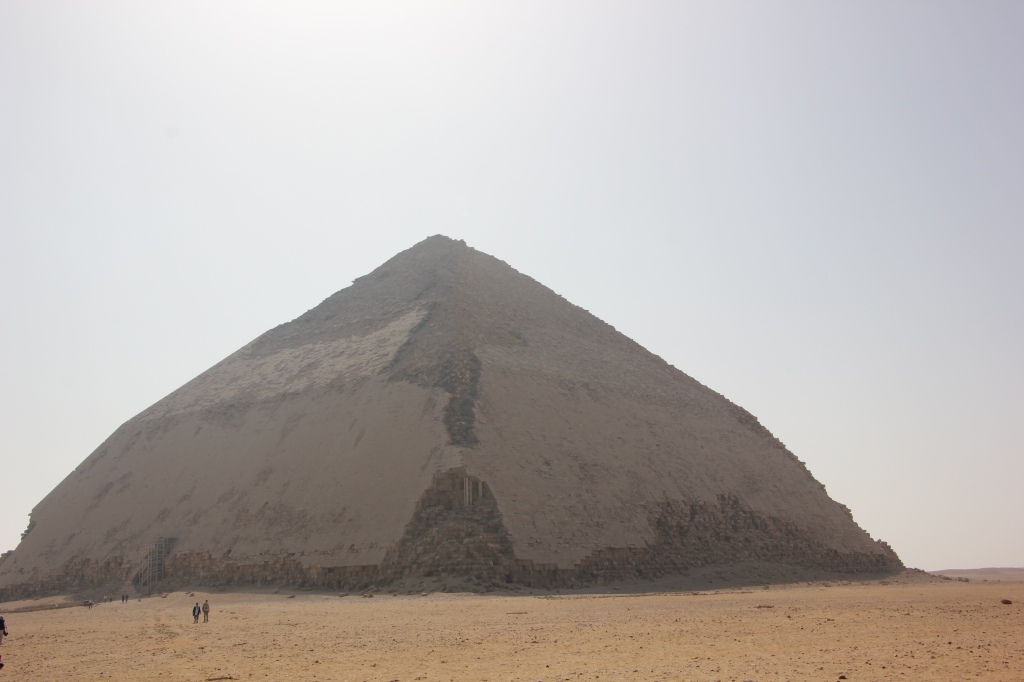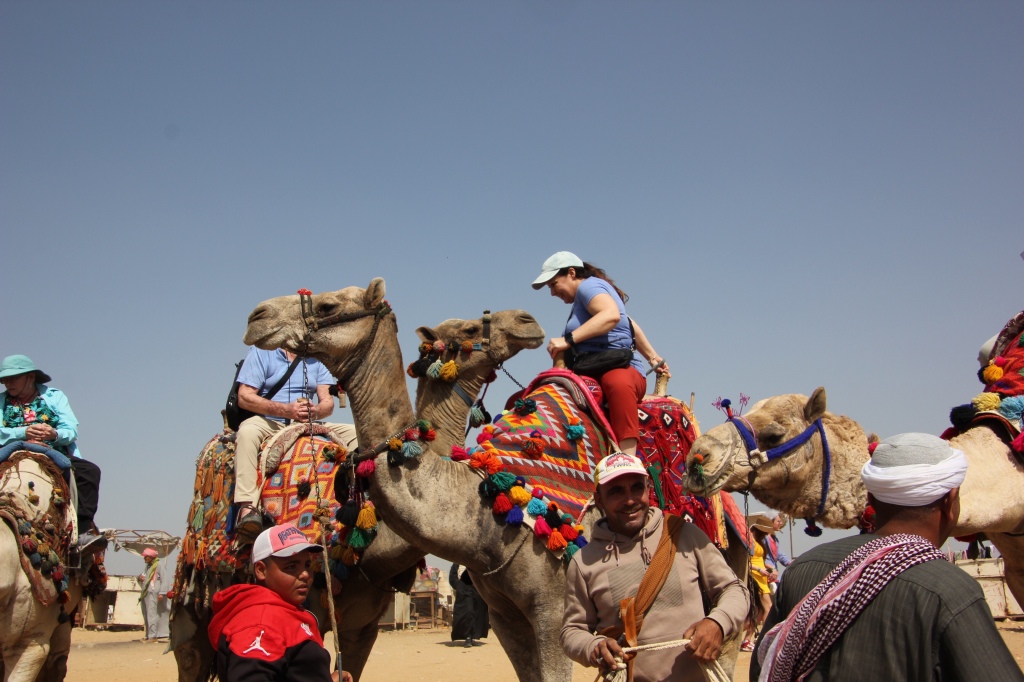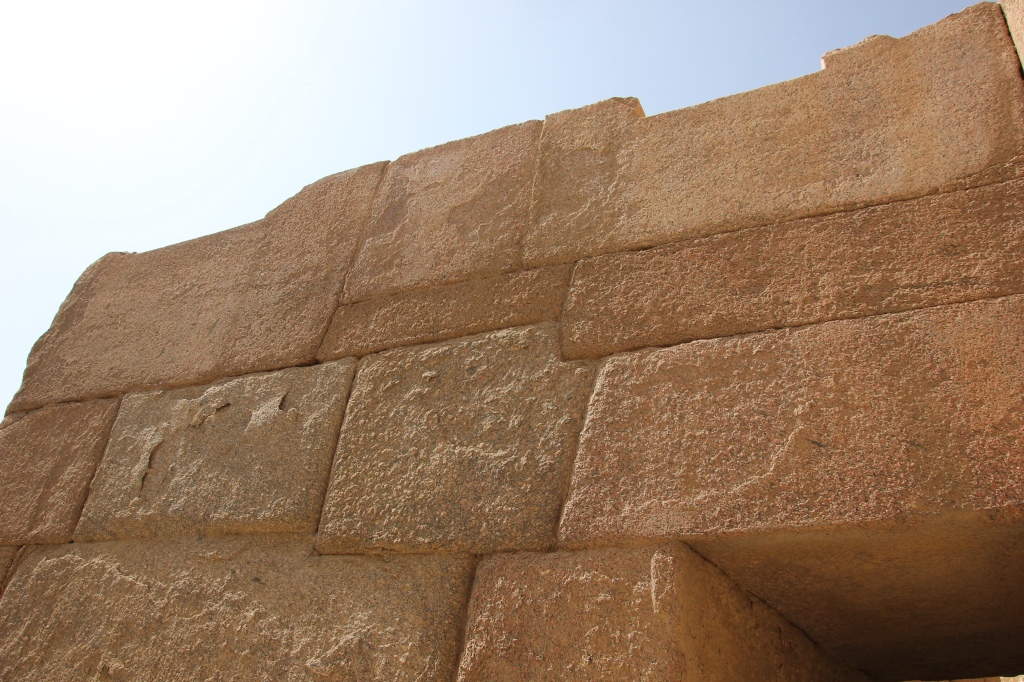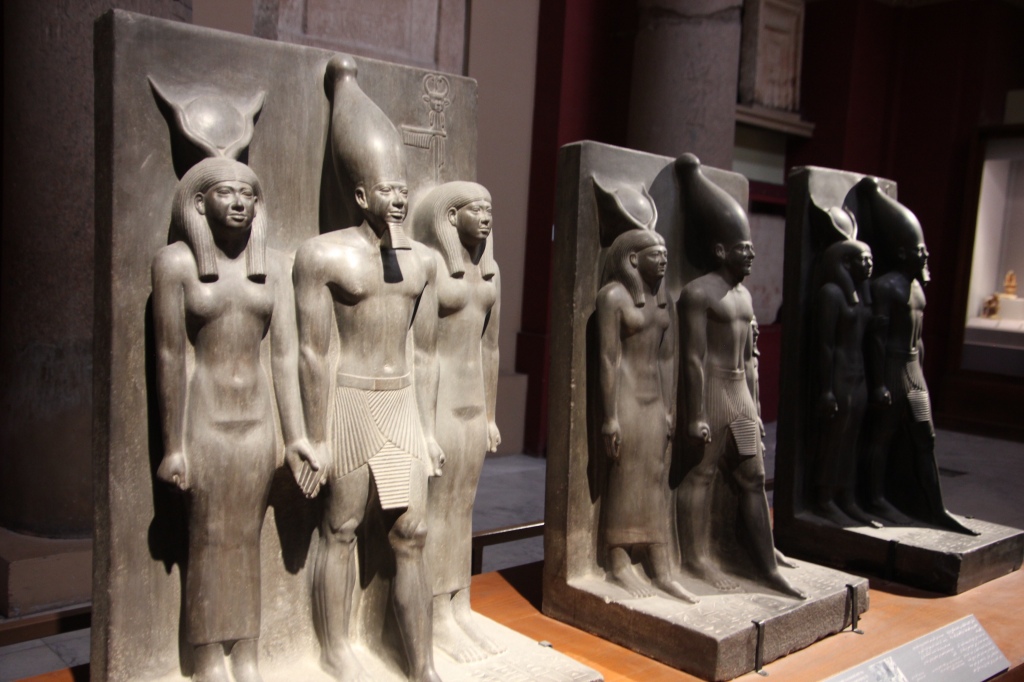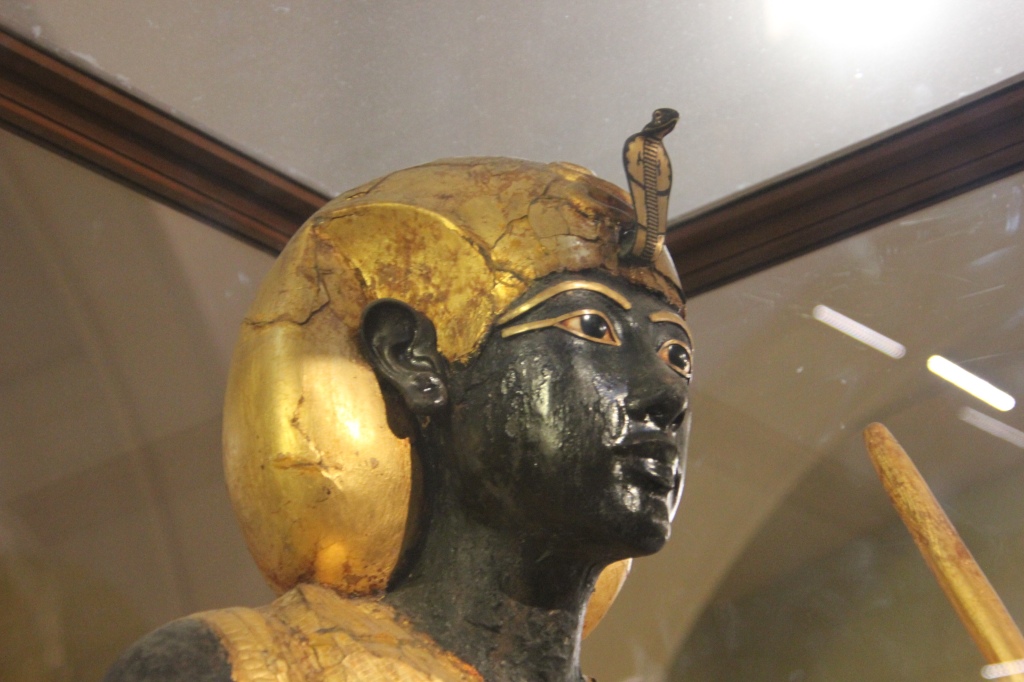Our day started with a visit to the Colossi of Memnon. these giant twin statues depict King Amenhotep III and originally there was a mortuary temple to him behind them that was destroyed in a giant earthquake in 1200 BCE and again in 27 BCE.

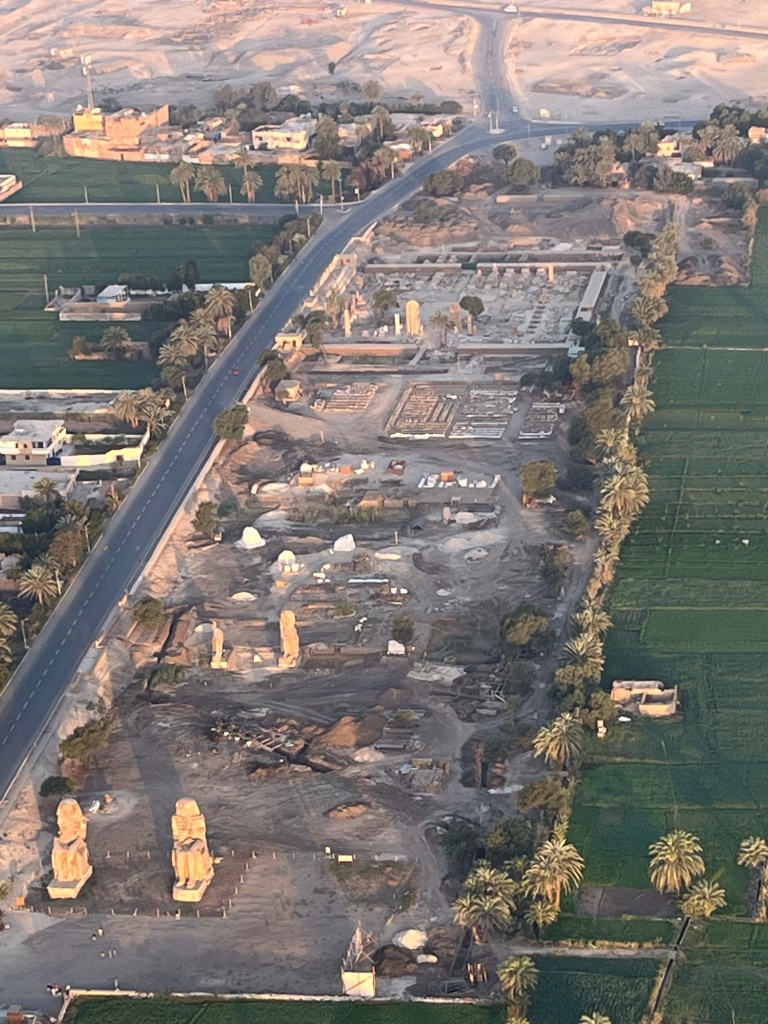
There were two parts of our journey that were foundational to my childhood dreams of Egypt – seeing the great pyramids and seeing King Tut’s tomb. Today we got to see Tut’s tomb. Surprisingly, it wasn’t my favourite part of the valley of the kings. His tomb was very small and empty. All his grave goods are in museums but his body remains in this tomb. All you could see of his remains were his blackened head and feet. They actually burned his face trying to get his mask off because it had been soldered on after he died.





The tomb of Sete I was the highlight of this day. It was big and bright with hieroglyphs and paintings. The stairs were challenging but definitely worth the climb. At the end of the day we had explored 6 different tombs and climbed the equivalent of 45 flights of stairs.
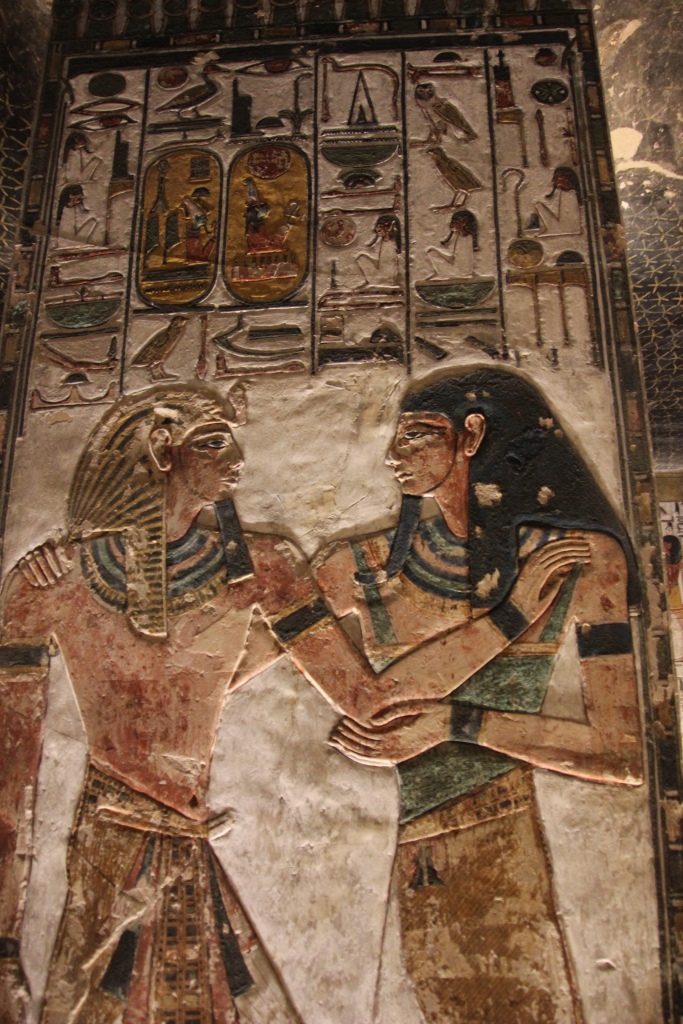



We also toured the tombs of Rameses I, III, IV and Rameses V/VI. Each was different but with similar iconography.
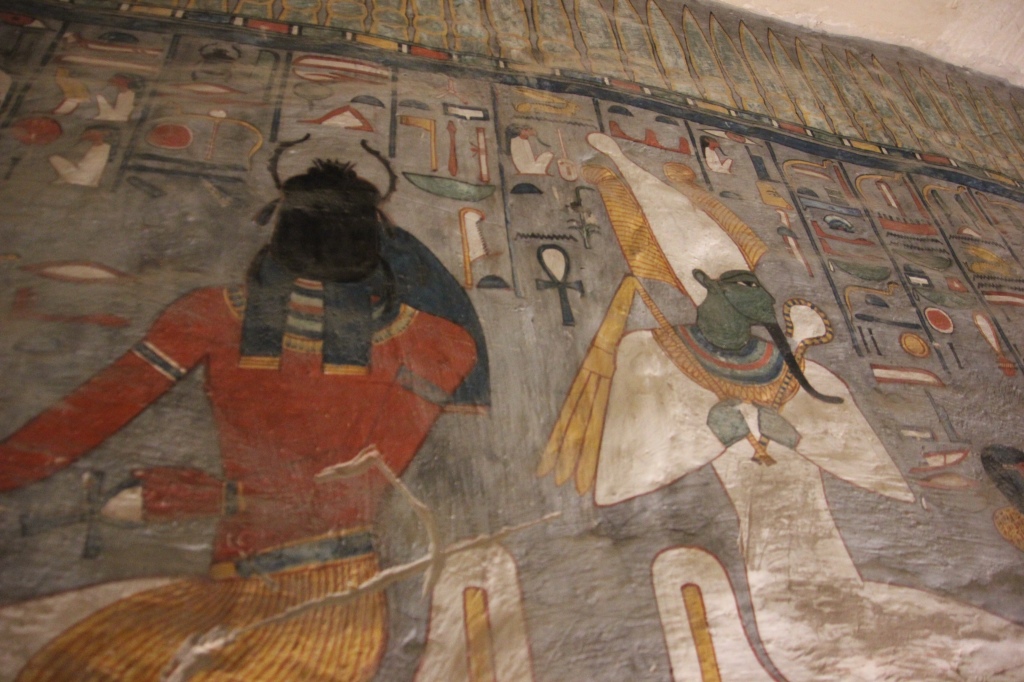
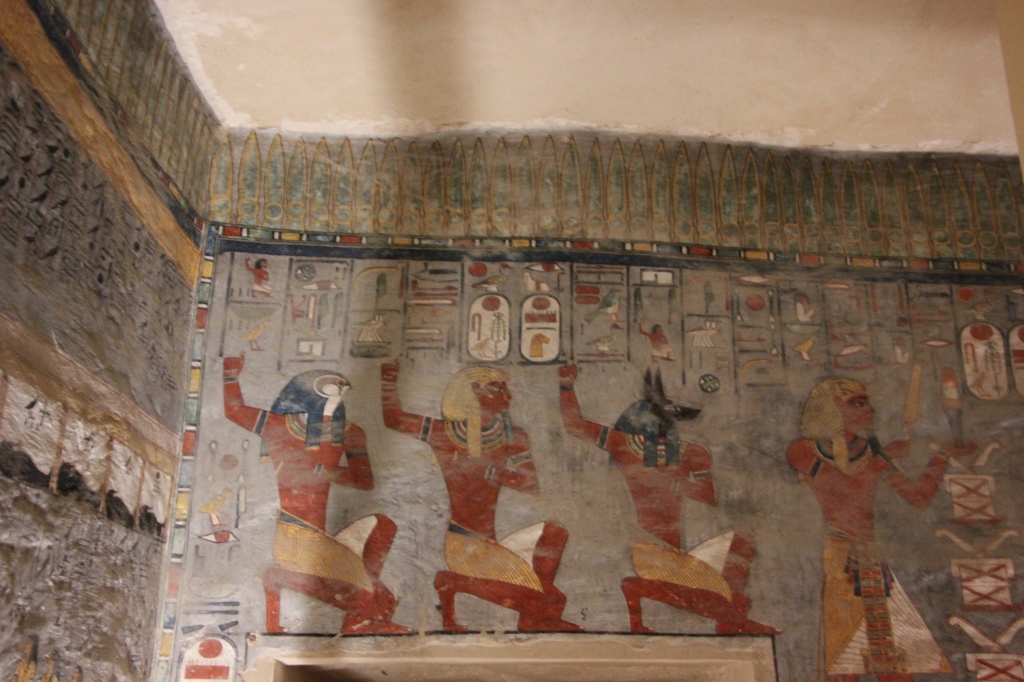
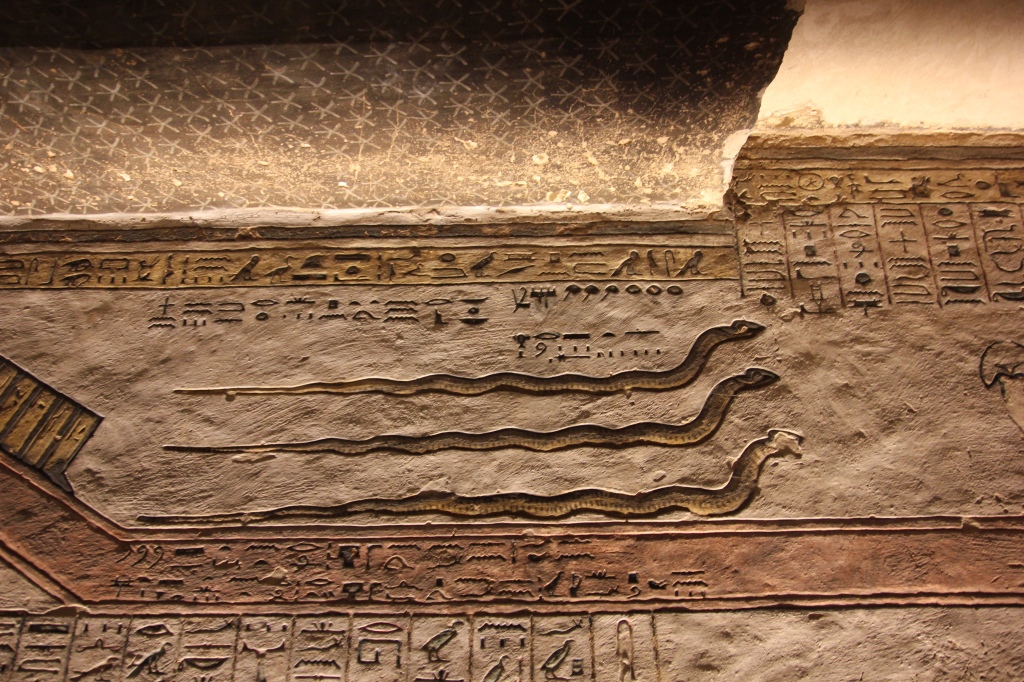


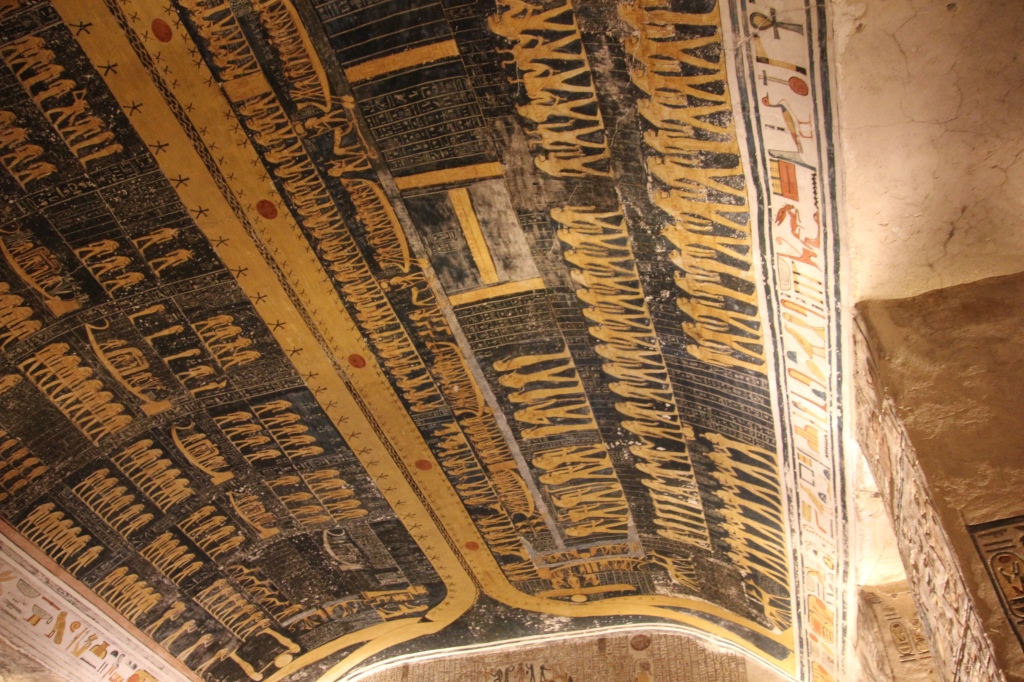

In Ramses VI used his father’s tomb and simply added on. some of the symbols in this tomb were interesting. The sedge plant is the symbol of Upper Egypt (southern Egypt, closer to the source of the Nile) and the bee was the symbol of lower Egypt (northern Egypt, closer to Cairo and the Delta). These symbols were in all the tombs. Scarabs and the eyes of Horace were also common. Scarabs symbolized birth, life, death and resurrection. Eye of Horace is associated with becoming whole and healing. It is often associated with funerary proceedings and has protective properties.

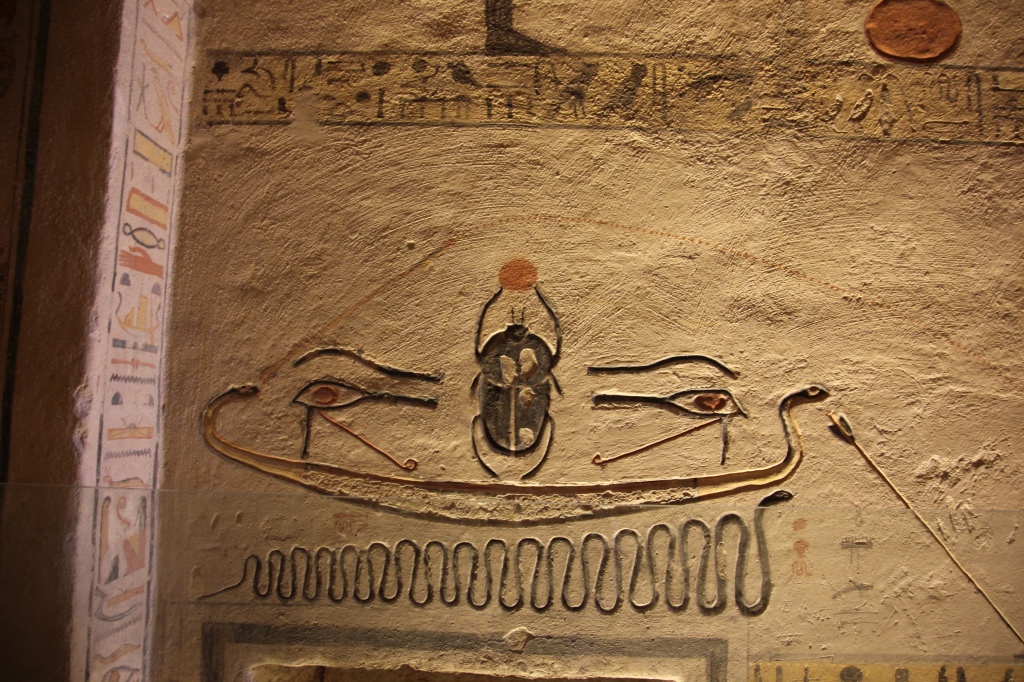
You could tell by the bleakness of the site why the tombs were undiscovered for centuries. People had know of the tombs in general and of course grave robbers had been mining the tombs over the years, however, the environment was bleak and harsh with a lot of rubble covering the entrances. There are 63 tombs that have been explored so far, but there are still tombs being found and the work is still done largely by hand. Who knows what lies untouched.
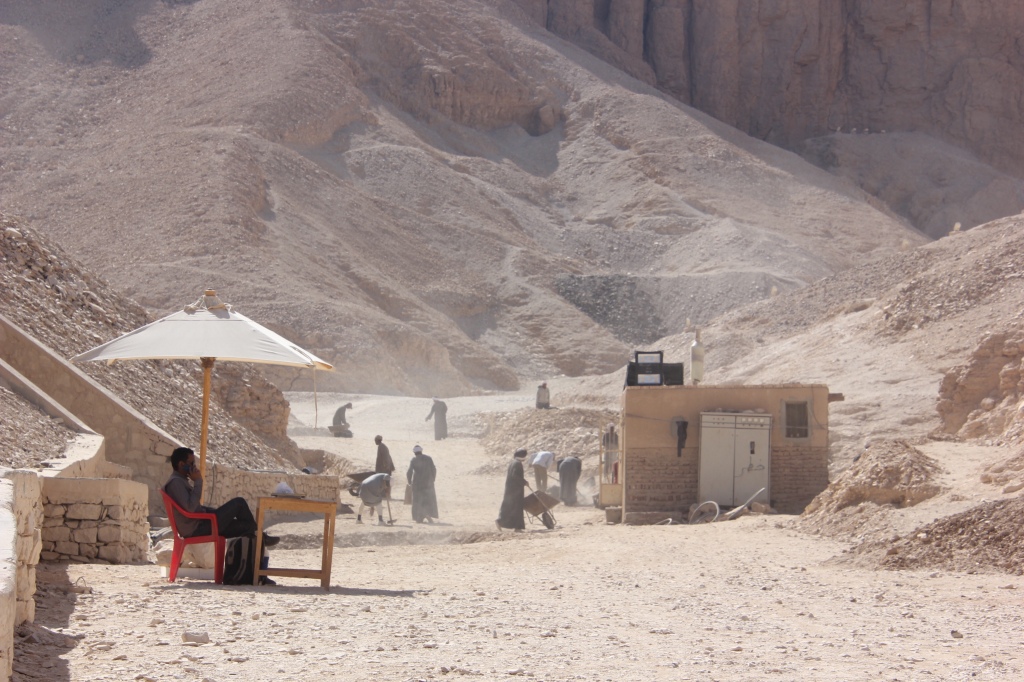
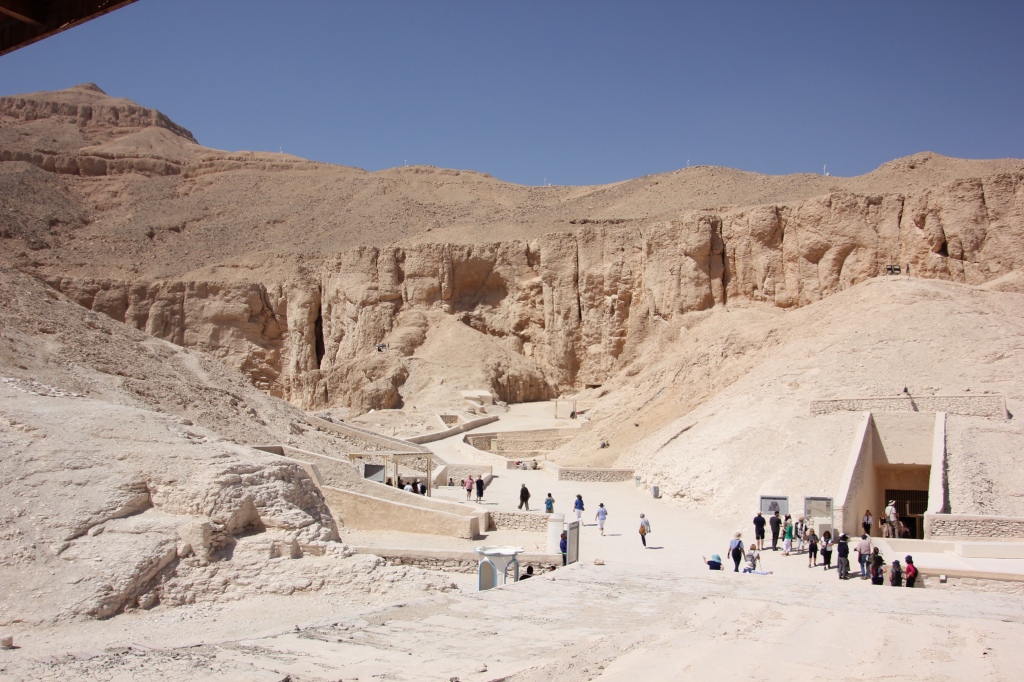
Ending our Valley tour, we stopped at Howard Carter’s house. He was sponsored by Lord Carnarvon for 5 years and in 1922, was on the verge of losing that sponsorship when a water carrying youth accidentally found the steps down to Tut’s tomb. They proceeded to excavate and the opening of the tomb was a big event. However, Carter did a bit of looting prior to the official opening for his own collections. These pieces have mostly been repatriated and all the grave goods will be shown in the new museum in Cairo.



